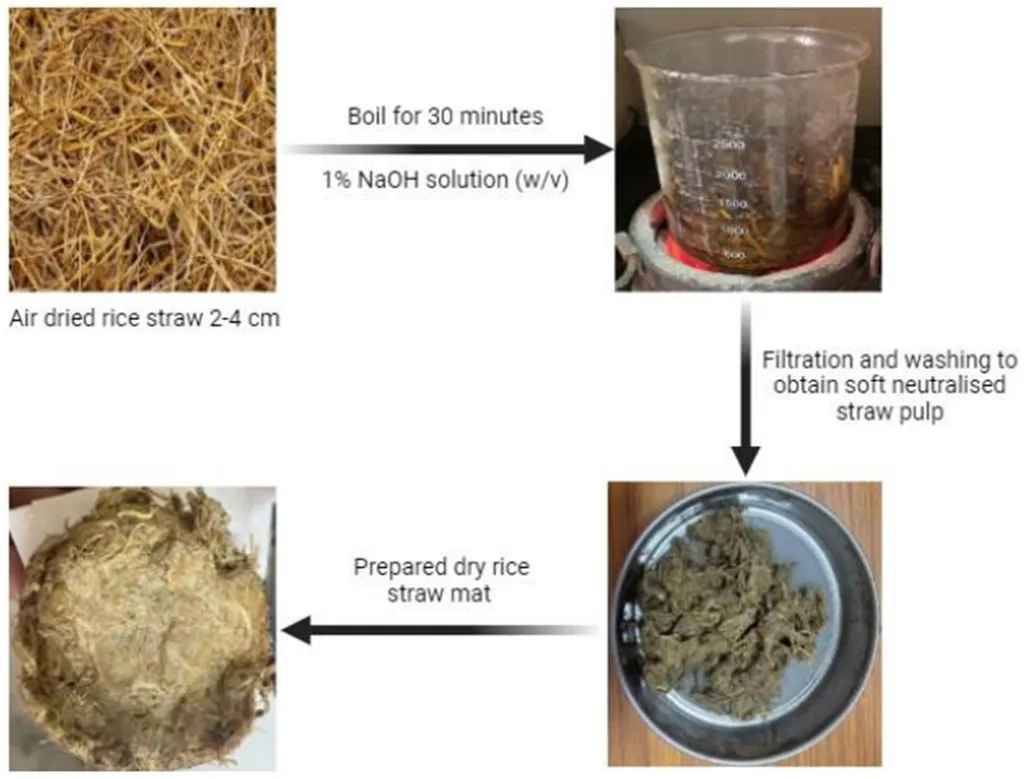In the heart of Thailand, researchers have uncovered a promising method to transform rice straw, a ubiquitous agricultural byproduct, into a valuable resource for renewable energy and nutrient recovery. This innovative approach, detailed in a recent study published in the *Journal of Applied Science and Engineering*, could significantly impact the agriculture sector by enhancing methane production and reducing environmental pollution.
Rice straw, often burned in fields, contributes to air pollution and health issues. However, a team led by Supaporn Phanwilai from the Department of Knowledge of the Land for Sustainable at Kasetsart University in Bangkok has developed a method to convert this waste into biogas through anaerobic digestion. The key to their success lies in physiochemical pretreatment methods, specifically thermal steaming and hydrothermal treatment, combined with co-digestion using cow manure and sewage sludge.
The results are impressive. “We observed a 36-50% increase in methane yield compared to single digestion methods,” Phanwilai explains. The thermal steaming method yielded the highest methane production, with 140.4 ± 10.6 mL CH₄ per gram of volatile solids added. This method also produced digestate rich in macronutrients like nitrogen, phosphorus, and potassium, making it a potential biofertilizer.
The study’s findings suggest that thermal steaming with co-digestion could be a game-changer for the agriculture sector. By converting rice straw into biogas, farmers can generate renewable energy while reducing the need for fossil fuels. Moreover, the nutrient-rich digestate can be recycled back into the soil, promoting sustainable farming practices.
“This research opens up new possibilities for waste management in agriculture,” says Phanwilai. “It’s not just about reducing pollution; it’s about creating value from waste.”
The study also sheds light on the microbial dynamics involved in anaerobic digestion. Thermal steaming enriched Methanobacterium and Bathyarchaeia, which are linked to higher methane output. In contrast, hydrothermal and untreated methods favored Methanosaeta and Methanosarcina. These insights could guide future research in optimizing biogas production.
As the world grapples with climate change and resource depletion, innovative solutions like this one become increasingly vital. By turning agricultural waste into energy and nutrients, we can move towards a more sustainable and circular economy. The research led by Phanwilai and her team at Kasetsart University offers a glimpse into a future where waste is not just managed but transformed into valuable resources.

